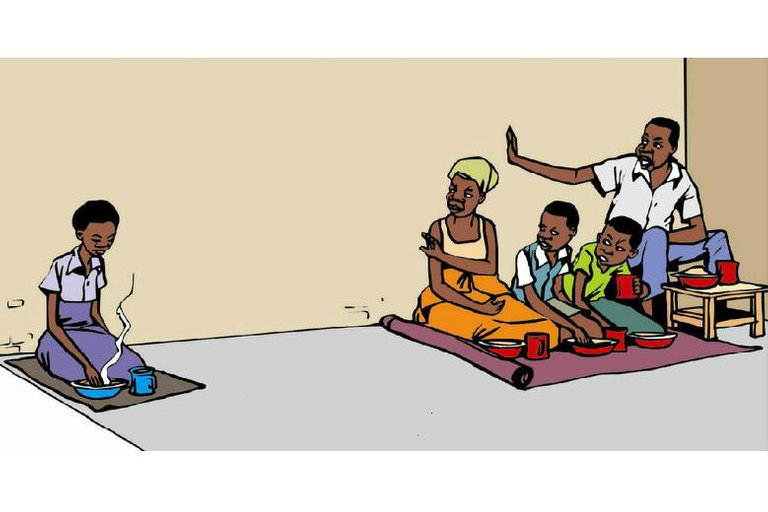
Definition
The Microsoft Word Dictionary defines stigma as the shame or disgrace attached to something regarded as socially unacceptable. Sociologists have taken this a bit further. In a seminal study on stigma in 1963, stigma was defined as an attribute that is seen as deeply discrediting to a person or group (Goffmann). Those attributes could be an illness, physical deformity, aberrant behaviour or social group (based upon religion or ethnicity, etc.). Stigma lets people or groups see differences or "others" in a negative light while confirming their own sense of normalcy and decency.
Subsequent researchers have viewed this more as a social process that creates or perpetuates social inequalities and which is used to legitimise discrimination. While this is generally true, stigma can also be a primal human response- particularly in the case of fearing a disease that is transmissible and potentially incurable.
Root Causes of HIV/AIDS Stigma and Discrimination
1.The role of knowledge about HIV and AIDS and fear surrounding it
Ogden and Nyblade believe that the fear of transmission from casual transmission, and the various "what if scenarios" are the result of 1) the lack of specific, in-depth information about HIV transmission, 2) fear-based public messaging, and 3) the evolving nature of knowledge about HIV and AIDS.
2.The role of values, norms, and moral judgment
This stigma is exacerbated by the seriousness of the illness, its mysterious nature, and its association with behaviours that are either illegal or socially sensitive (e.g., sex, prostitution, and drug use). Also relevant is the perception that HIV infection is the product of personal choice: that one chooses to engage in "bad" behaviours that put one at risk and so it is "one's own fault" if HIV infection ensues."
Effects of stigma
· Social isolation
· Limited rights and reduced access to services
· HIV/AIDS related stigma fuels new HIV infections
· Secondary stigma (stigma by association)Stigma in service delivery
· Discourages access to Absolute Neutrophil Count (ANC) services
· Prevents access to counselling , HIV testing and Mother To Child Transmission services (MTCT)
· Discourages disclosure of HIV test results to partner(s)
· Discourages acceptance of MTCT interventions
· Inhibits use of safer infant-feeding practices
· Confers secondary stigmatisation on the child
Addressing stigma
Interventions addressing HIV-related stigma can take place at all levels: National, Community, Social/Cultural, MTCT site/facility and Individual
Educate and train healthcare providers in:
· HIV transmission
· Activities to address stigma
· Awareness of language that describes People Living With HIV/AIDS (PLWHA)
· MTCT-related policies
· Counselling and safer infant feeding practices
Enlist manager’s help to ensure policies and procedures are in place and implemented for:
• Non-discrimination policies
• Confidentiality
• Universal precautions
• Post-exposure prophylaxis (PEP
Summary/Conclusion
• Stigmatisation reflects an attitude
• Discrimination is an act or behaviour
• Stigma and discrimination are often linked to violations of human rights
• Human rights declarations affirm all people's’ rights to be free from discrimination, including discrimination based on HIV/AIDS status.
HIV/AIDS-related stigmatisation and discrimination can discourage access to key HIV services, including:
– Testing
– MTCT services
– Antenatal care
– ARV prophylaxis
Stigma discourages
Disclosure of HIV status
Acceptance of safer infant-feeding practices
Access to education, counselling, and treatment even when such services are available and affordable
• The MTCT programs and staff can help reduce stigma and discrimination in the healthcare setting, in the community, and at the national level
• Encourage MTCT staff to serve as role models
• Involve PLWHA
• Promote partner participation and community support
Hi! I am a robot. I just upvoted you! I found similar content that readers might be interested in:
http://www.pitt.edu/~super7/21011-22001/21301.ppt